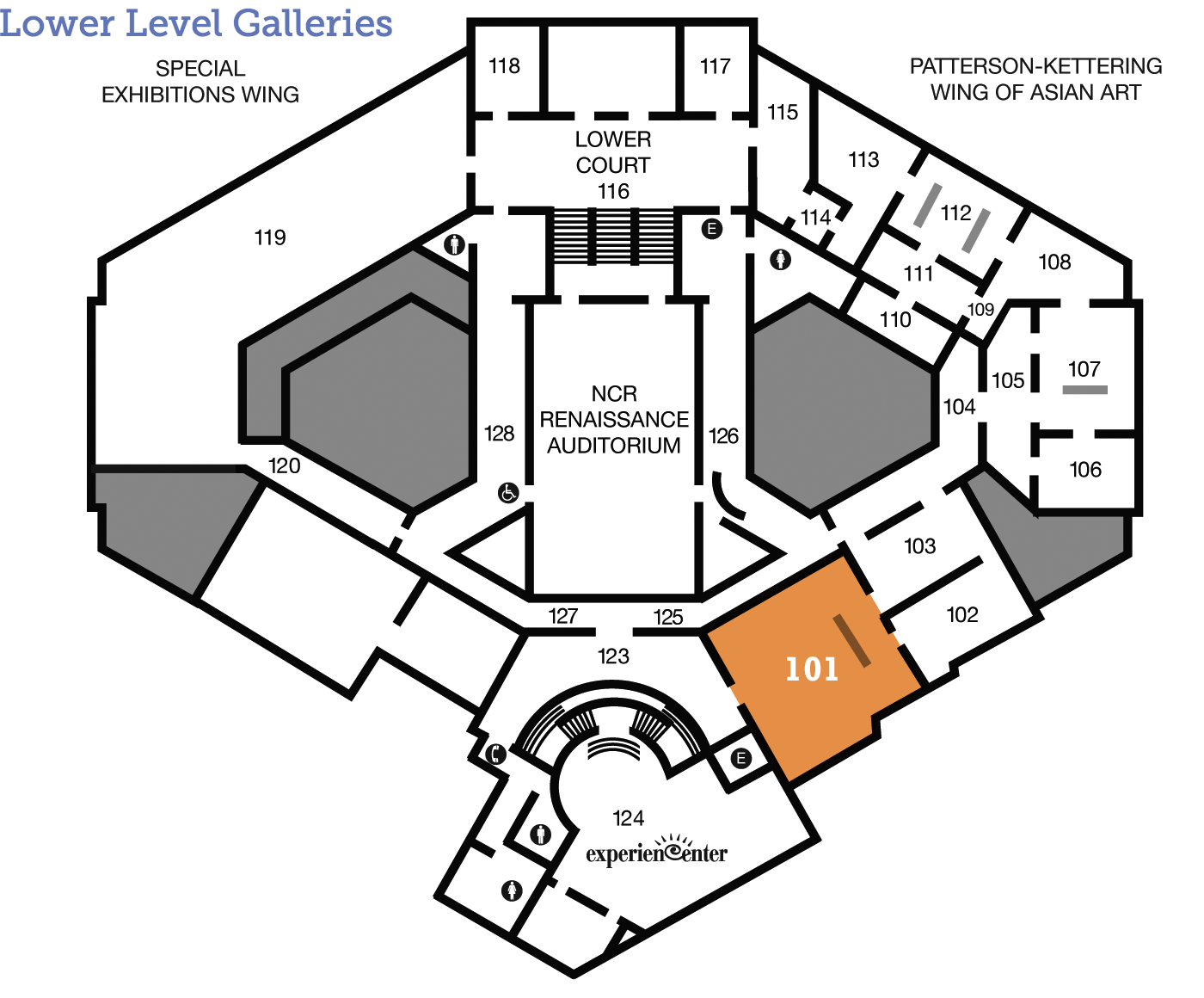
Lobala people
Slit Drum in the Form of a Buffalo
(20th century)
Lobala people, Democratic Republic of the Congo 20th century, Wood 24 ⅝ x 104 ⅝ x 20 ½ inches Museum Purchase with the funds provided by Thomas C. Colt Jr., Memorial Fund 1985.39
The Beat of a Different Drum
This slit gong, commonly called a “slit drum,” does not sound like a typical drum, and is used for more than just music. Discover how the Lobala and other peoples in Central Africa communicate with “talking drums” like this one.
A Day in the Life
Did You Get My Message?
The Lobala are agriculturalists and fisher-people who live along the Congo and Ubangi rivers in the Democratic Republic of the Congo. Lobala villages are led by chiefs who might own large slit drums like this one as emblems of their power. Men often place these instruments, called ngoto in Lobala, near the river to increase sound travel, and beat intricate messages to make announcements and relay information to distant villages. These items were a historical necessity for communicating in a region where dense rainforests and harsh rivers make travel difficult. Most drummers begin practicing their skill as children, and also use the drum in musical performances accompanied by rattles, skin drums, xylophones, and other instruments.
Quiz
What sorts of messages do the Lobala transmit on their slit drums? They send messages that:
call people to war.
announce visitors.
arrange assemblies.
announce a birth or death.
guide people lost in the forest.
Tools and Techniques
Setting the Tone
Central African artists make slit drums out of hardwood logs, which they select based on their knowledge of the sound qualities of different wood. They then cut a narrow, deep slit in the log, and hollow it out with adzes and other carving tools, being careful to not puncture the sides. During this process, artists leave one side thicker, so that when hit it can produce two different tones–high and low. The buffalo is a popular form for large slit drums; its legs lift the chamber off the ground for increased resonance, while the head and tail serve as handles.
Learn exactly how the Lobala use these objects to communicate in the “Dig Deeper” tab.
Behind the Scenes
Look Closer
Just for Kids
Signs & Symbols
Dig Deeper
Now You’re Talking!
Lobala is a complex tonal language in which each syllable of a word is spoken in either a high or low tone. In tonal languages, words with the exact same consonant-vowel structure have different meanings because of their different tonal patterns. For example, in the Rendille language, the word inam said in a high-low tone pattern means “boy,” while spoken in a low-high tone pattern it means “girl.” Highly skilled drummers can reproduce these patterns on the two-toned slit drum to communicate. Almost any information can be relayed, as long as multilingual drummers are available to translate messages drummed in languages other than Lobala.
Arts Intersected
The Sculpture Speaks
Did You Know?
Expert Opinion
Look Around
About the Artist
Is It Really You?
A Belgian art dealer purchased this object in the 1980s from a Lobala chief in a village called Ngona. This chief stated that the drum was originally owned by Chief Lobanga, who ruled in the mid-19th century. However, it seems unlikely that a slit drum like this would have survived so long, given the nature of its use and the humid environment of the region. It may be that it is one of several replacement drums that assumed the history and value of the original object. This phenomenon surrounds wooden objects in numerous African cultures; research has not indicated how common this might be among the Lobala.
Talk Back
Stop, Look, Listen
Slit drums are most valued among Central African peoples for their sound–both tonal quality and loudness. We are thus unable to experience and appreciate this object in the way that the artist fully intended. Do you still find it valuable to simply look at this object, and not hear it? Why?

